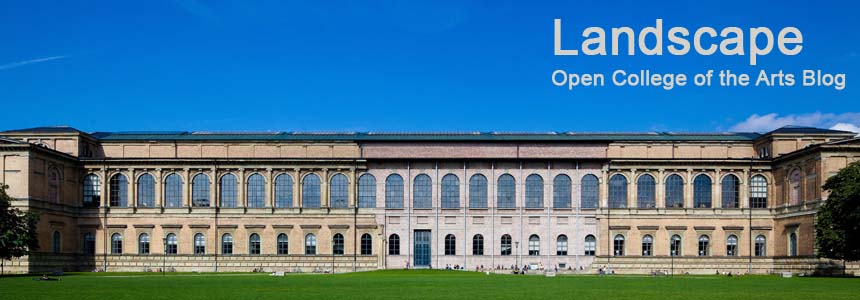Here are my 4 chosen artists and my comments on their personal styles
Ansel Adams
Ansel Adams’s style is defined less by what he includes in his photographs, but more by what he leaves out. Adams’s world view is one of nature unbounded; mankind is an intrusion to be eradicated from his photographs. Once a suitably “clean” vista is found, Adams’s sublime skill in creating balanced images of great detail and carefully managed contrast takes over. Always B&W, always measured, each photograph is presented as a singular work of art. His approach monumentalizes; he confers upon his subjects a pictorial immortality. Ironically, he also draws to the location the human intrusion he strove to deny.
André Martin
In “Images D’un France” André Martin evokes the landscape
and colours of 19th century French Impressionism, Monet armed with Fuji
Velvia. Martin caresses the landscape of
France, producing images with exquisite softness frequently backlit by the
summer sun. He abandons depth of field and technical precision for an almost
painterly style that invites the viewer into the picture. More often than not the land fills the frame,
the sky rarely intrudes. His approach is intimate and personal, his style is to
engage closely with his subject and deliver a personal and emotional rendition
of the landscape.
Peter Schlör
Peter Schlör trades in light and shadow, his black and white
imagery spans the complete range of tonal possibilities. Deep black shadows contrast
with brightly reflecting surfaces, hard edges define the bleak landscapes he
favors. Where shadow does not obscure
the land each detail is in sharp relief, every wrinkle and bump is
exposed by his searching lens. He avoids the soft and pastoral, preferring to
shoot desert landscapes, with only derelict houses or barren trees breaking up the emptiness.
Skies are rendered as black as the foreground shadows, whilst his own shadow
often provides the only indication of life.
Wim Wenders
German film director Wim Wenders brings a cinematographic quality
to his landscape imagery, many of the photographs in “Bilder von der Oberfläche
der Erde” could equally be cinema stills. His style involves vibrant use of
colour and a framing very reminiscent of Stephen Shore’s “Uncommon Places”. People frequent his shots, the shutter press
clearly timed to balance their presence within the framed landscape. He clearly is concerned with humanities
impact upon the environment, although towns and cities feature as much as natural
landscapes.
This study clearly opens the door to the question of what is the style of Shaun Clarke? First of all I observe in the style statements above that with the exception of Adams they all refer to a specific period or volume of work, styles change as does the the subject matter that photographers address. To what degree this happens, I do not know. I recently visited an exhibit that among other things looked at Pablo Picasso's paintings of women. Across a lifetime his style changed quite profoundly, although I think in most cases it could be easily identified as his work, but not in all.
Right now, I have no style as such, I flit from one subject to another, experimenting with colour and framing, exploring genres or subject types. As a student this is appropriate, but at some point my own voice needs to be heard. Looking at the more formal work for this course, the assignments and portfolio thus far, I have used 3 distinctly different visual styles, beginning with bold strong colours, shifting to stark black and white, then softening to almost pastel shades for the early morning work. In each case I am experimenting with ideas and building a body of experience that I can later use to formulate a personal style.
One thing I can see in my work so far is a concern for the formal structure of an image, a desire for structures and symmetries. As I move from landscape driven work towards people orientated social documentary it will be interesting to see how that evolves, do I still pull towards images with strong spatial definition or allow the clutter and randomness of human life to penetrate?

No comments:
Post a Comment